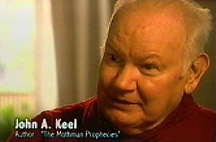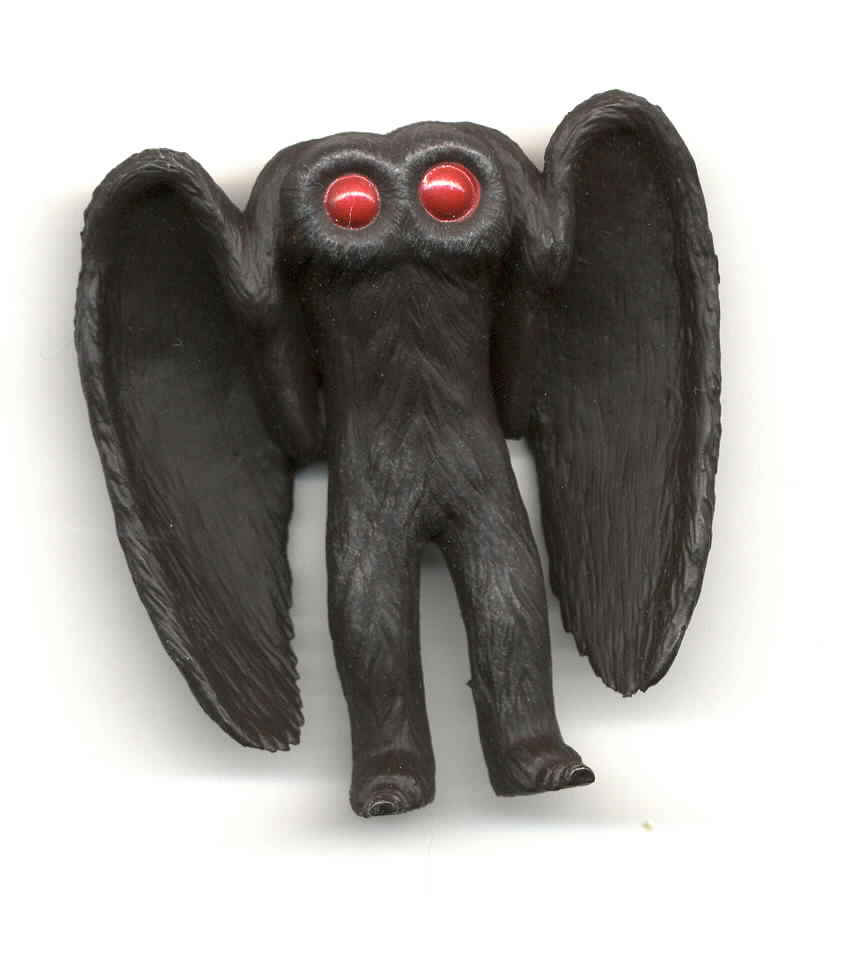
February 12, 2010

On February 10, 2010, MonsterQuest broadcast their new program on Mothman. Here are some initial thoughts.
Considering that the History channel frequently calls forth frame-of-reference moments about history in their programming, I was a little surprised that more historical tidbits about the Mothman were not included in this episode. It was rather striking, actually, that the History network would use a program divider to give a factoid about Valentine’s Day, and ignore the symbolic historical events that tie into the Mothman legacy.

Why was there no concern for the importance of this location in the Revolutionary War, no mention of the Curse of Cornstalk, no reflection on the context of the Vietnam War during the time of the Mothman reports, no tip of the cap to John A. Keel’s significant research as the sightings were unfolding, and no reference points about the 1975 book or the 2002 movie? Surely, this History program did not mean to indicate that all the historical timeline moments should have been excluded from this episode, did it?
Next, what are we to think of the Wisconsin field excusion? Nick Redfern is a good writer on anomalist events in general and a friend. The fact that Nick and his wildlife-aware companion spotlighted two deer seemed a bit anti-climatic, after showing them hiking around all day. I would be interested to know what Nick thinks of how his “expedition” was portrayed.
The Ohio segment about owl eyes reflecting red might have been more in context if that wasn’t the punchline to a Joe Nickell article of a few years ago in Skeptical Inquirer. Were the repeated images of an owl with red eyes in infrared or merely created special effects? Were we told? We appear to have not been shown human range light imagery of an owl with red eyeshine, within the comparable lighting of how the 1966-1967 eyewitnesses reported Mothman. Why not? Do they actually show red, in the dark, in car lights, to the human eye?
And guess who shows up in this episode? Joe Nickell. He is not here to defend his too-short owl theory, but to test eyewitness sightings of Mothman cutouts regarding height estimates. While I agree with his thesis that eyewitnesses do not estimate size well, as a scientific proof, I would ask for full methods, protocols, and results being revealed more fully about this experiment.
For one thing, there was no identification of the test eyewitnesses. I understand that one person might have been one of the tour guides at the Mothman museum, but who knows? Who were these people? The lack of standardized indications of who saw what, what was seen, how many reported what heights, and other data collected was unfortunate. Indeed, MQ let this entire test be boiled down to Nickell saying something (I was not able to record his statement, and thus I must paraphrase) about how some of his test subjects got the heights right but how he was struck that (three?) people were so incorrect in their estimates. Even Nickell would agree that the complete database would be instructive if the estimates were so way off, and much could be learned from looking at the raw data.
Finally, the forensic artist added his insights. Of course, I have no problem with what this artist drew, but then why should he or any of us be surprised when he discovered the eyewitnesses had a lot of common descriptors in agreement? As soon as an eyewitness says they have seen a Mothman, whether it is in West Virginia, Ohio, Wisconsin, or California, they already are committing to a frame of reference of a creature that is nowadays rather well-known. From book drawings to Japanese toys, there is a standardized image of what a Mothman looks like.
One major shortcoming of this program, I must refer to again, is the lack of any historical examination of the Mothman cases. Clearly one investigation that would have been helpful would have been to compare the distinctive differences in individual eyewitnesses’ shifting descriptions of their own sightings. Now that would have made an intriguing sidebar to this show. I know for a fact that more than one of the witnesses shown on that program are describing Mothman in more supernatural terms today than they did in 1966.
Unknown to most, there is even filmed evidence of this. When I was brought out to Sony/Screen Gems studios before the release of the Mothman movie, I was allowed to see raw, unedited footage of their companion documentary in production. During that private screening, I was shocked to see one eyewitness gave a totally different rendering of that individual’s sighting than what had been given before and what was shared on the current MQ Mothman episode. The person even said in the 2001 retelling that the Mothman had a long tail with a point on its end like the devil! Clearly, some of these eyewitnesses are performing or suffering from psychological difficulties.
The forensic artist could not be expected to have done psychological profilings as well as drawing his sketches, but certainly there is more than meets the eye regarding some of these encounters’ repeated descriptions. Background investigations of the eyewitnesses, when their stories appeared, and when various details were added should be reviewed.
What stones were unturned in this ignoring of history in this episode?
For example, one eyewitness who was 18 years old when she allegedly had a 1966 sighting was not in the program. But she is cited frequently today, although her sighting was apparently not recorded in the papers at the time. Her story has become a staple of Mothman lore as she was introduced to John Keel when he came to town first in December 1966 and today Connie Carpenter’s apparent sighting is well-known. But one must ask why did her story not appear earlier, for after all she was the niece of the main news person writing the stories, Mary Hyde? How many have looked a bit deeper into these initial stories and compared them to what we are being told today or even what others said in 1966?
MonsterQuest attempted to cover new ground in their show, and they did. I congratulate them for that. But we have to ask for more results from what they found and a little bit more background about those who gave them the info.


About Loren Coleman
Loren Coleman is one of the world’s leading cryptozoologists, some say “the” leading living cryptozoologist. Certainly, he is acknowledged as the current living American researcher and writer who has most popularized cryptozoology in the late 20th and early 21st centuries.
Starting his fieldwork and investigations in 1960, after traveling and trekking extensively in pursuit of cryptozoological mysteries, Coleman began writing to share his experiences in 1969. An honorary member of Ivan T. Sanderson’s Society for the Investigation of the Unexplained in the 1970s, Coleman has been bestowed with similar honorary memberships of the North Idaho College Cryptozoology Club in 1983, and in subsequent years, that of the British Columbia Scientific Cryptozoology Club, CryptoSafari International, and other international organizations. He was also a Life Member and Benefactor of the International Society of Cryptozoology (now-defunct).
Loren Coleman’s daily blog, as a member of the Cryptomundo Team, served as an ongoing avenue of communication for the ever-growing body of cryptozoo news from 2005 through 2013. He returned as an infrequent contributor beginning Halloween week of 2015.
Coleman is the founder in 2003, and current director of the International Cryptozoology Museum in Portland, Maine.
Filed under Avian Mysteries, Conspiracies, Cryptomundo Exclusive, Cryptotourism, CryptoZoo News, MonsterQuest, Mothman, Reviews